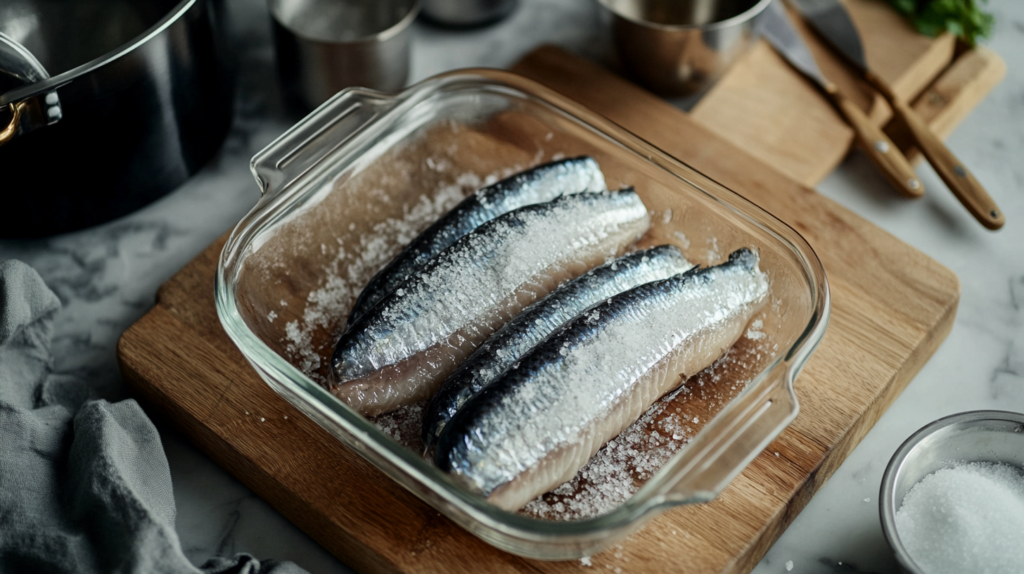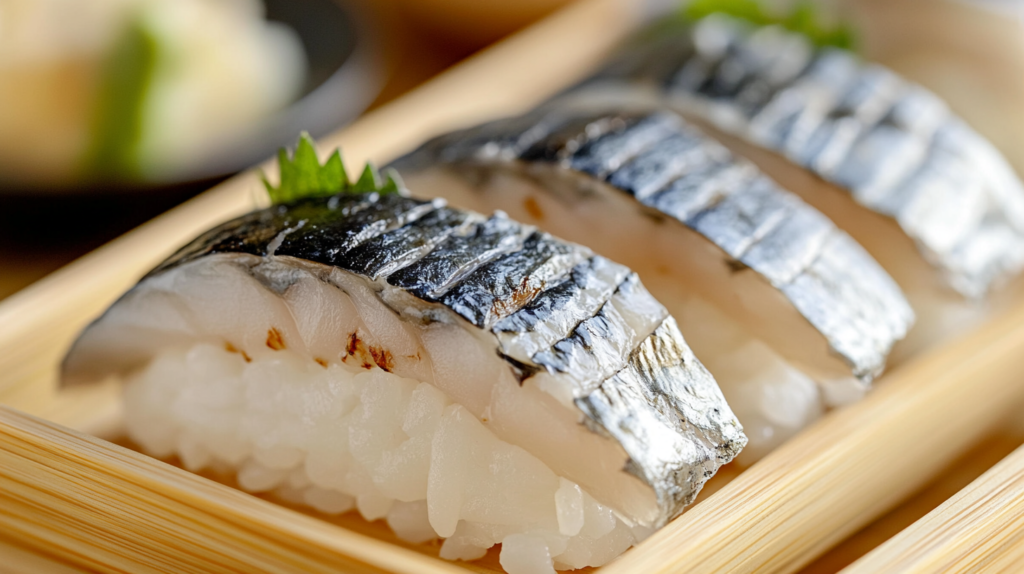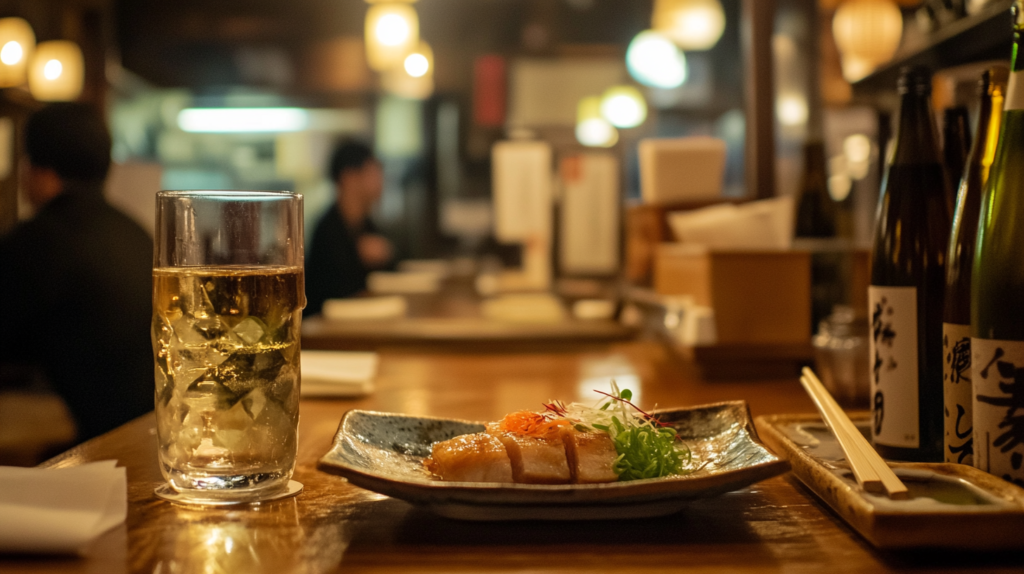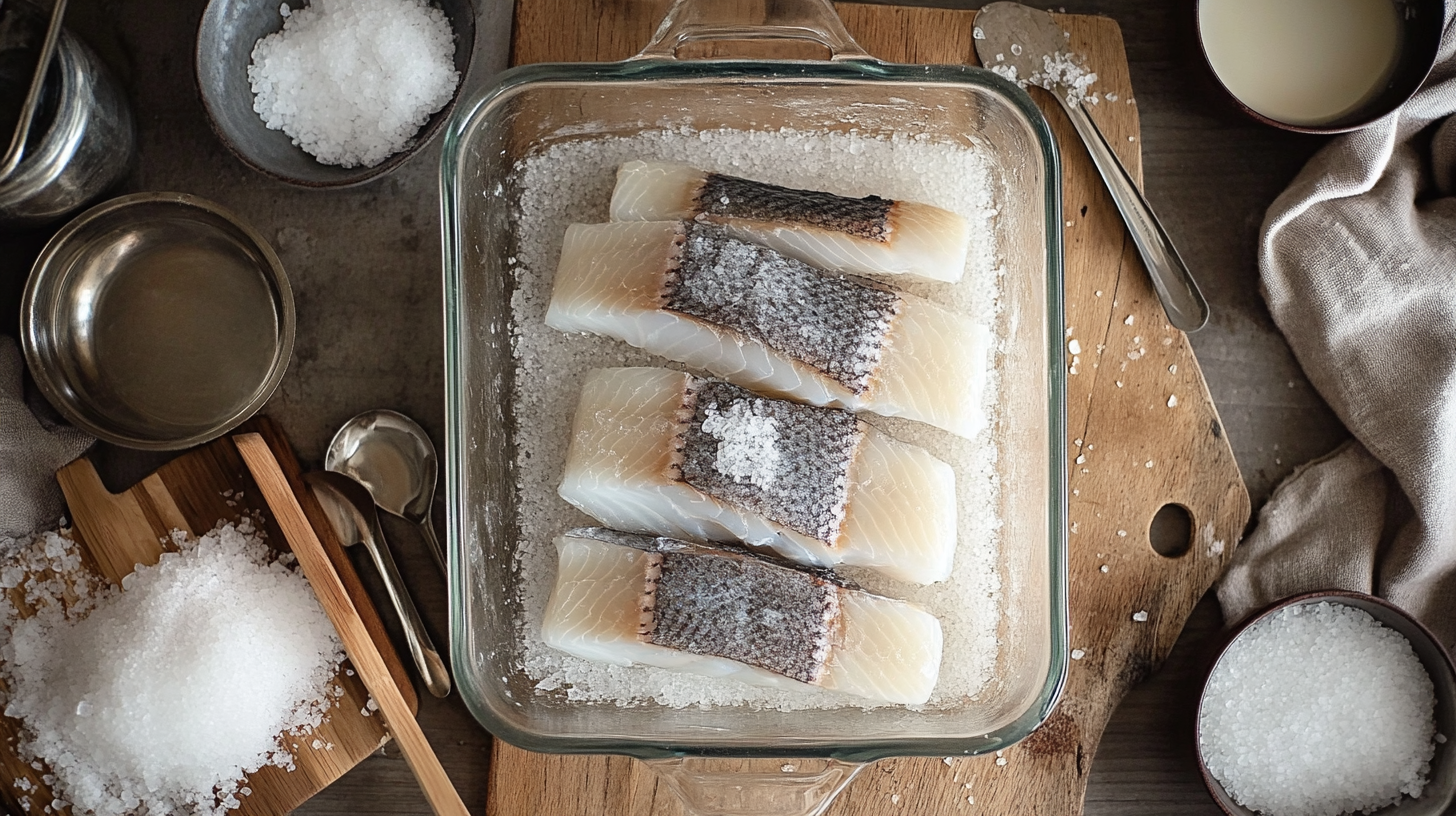Have you ever tried something that’s so delicious it instantly transports you to another world? That’s exactly what shime saba does. This Japanese dish, made from mackerel cured in vinegar, is a flavor-packed journey that’s both tangy and savory. But there’s more to this dish than meets the eye. Let’s dive into the story of shime saba, explore its origins, and discover why it’s such a beloved delicacy.
Table of Contents
The Origin and Cultural Significance of Shime Saba
Shime saba has been part of Japanese cuisine for centuries. It all started as a way to preserve fish before refrigeration was a thing. Back in the day, vinegar was like a magical ingredient it didn’t just keep the fish fresh but also added a zingy flavor that made it even better.
“Shime saba isn’t just food; it’s a piece of Japanese history, blending tradition and taste into every bite.”
In Japan, this dish is a staple in sushi and sashimi. It’s one of those foods that shows up at celebrations, family dinners, and even casual meals. Why? Because it’s simple, flavorful, and absolutely unforgettable.
Shime Saba’s Role in Sushi and Sashimi
If you’re a sushi lover, you’ve probably seen shime saba on the menu. It’s usually served as a nigiri (on a small ball of rice) or as sashimi (thinly sliced on its own). The vinegar cure enhances the natural flavors of the mackerel, giving it a slightly sweet, tangy, and rich taste. Think of it as the life of the party on your plate!
How Shime Saba Is Made: A Step-by-Step Guide

Ever wondered how this culinary magic happens? Making shime saba is both an art and a science. It’s all about balance getting the right mix of freshness, flavor, and texture. Let’s break it down step by step.
Selecting the Right Mackerel for Shime Saba
The key to perfect shime saba starts with the fish. You’ll need fresh mackerel. Look for clear eyes, shiny skin, and a clean smell. If the fish smells too “fishy,” it’s a no-go. Freshness is king here!
The Vinegar-Curing Process Explained
The curing process is where the magic happens. First, the mackerel is cleaned and filleted. Then it’s sprinkled with salt and left to rest. This step draws out excess moisture and firms up the flesh. After that, the fish takes a vinegar bath, soaking up all that tangy goodness. The result? A perfectly cured fillet that’s ready to eat.
Key Ingredients for Making Authentic Shime Saba
Making shime saba doesn’t require a ton of ingredients, but each one plays an essential role. Here’s what you’ll need:
| Ingredient | Quantity |
|---|---|
| Fresh Mackerel | 2 fillets |
| Salt | 2 tablespoons |
| Rice Vinegar | 1 cup |
| Optional: Sugar | 1 teaspoon |
See? Simple yet effective. It’s all about letting the fish shine while enhancing its natural flavors with the salt and vinegar.
The Unique Flavor Profile of Shime Saba

What makes shime saba so special? It’s all in the flavor. Imagine biting into something that’s both rich and light, tangy yet savory. The vinegar adds a zing that cuts through the natural oiliness of the mackerel, creating a perfect balance. And the salt? It amplifies the umami, making every bite a taste explosion.
The Balance of Sweet, Sour, and Umami
Shime saba is a masterclass in balance. It’s like a symphony where every instrument plays its part. The sweetness from the fish, the sourness from the vinegar, and the umami from the curing process all come together in harmony. It’s no wonder this dish has such a devoted following!
How Curing Enhances the Texture of Mackerel
The curing process doesn’t just improve the flavor; it also transforms the texture. Fresh mackerel can be a bit soft, but after curing, it becomes firm and slightly chewy. It’s a texture that pairs beautifully with sushi rice or stands out on its own as sashimi.
Health Benefits of Eating Shime Saba
Now, let’s talk about the health perks. Shime saba isn’t just tasty; it’s also good for you! Packed with nutrients and low in calories, it’s a guilt-free indulgence that’s hard to beat.
Rich Source of Omega-3 Fatty Acids
Mackerel is loaded with omega-3 fatty acids, which are great for your heart, brain, and overall well-being. These healthy fats can help lower bad cholesterol, reduce inflammation, and even boost your mood. Who knew a delicious dish could also be a superfood?
Low in Calories and High in Protein
If you’re watching your weight, shime saba is a great choice. It’s high in protein, which helps keep you full, and low in calories, making it perfect for a balanced diet. Plus, it’s a lean protein source that doesn’t skimp on flavor.
The Gut-Friendly Benefits of Vinegar-Cured Foods
Vinegar isn’t just for flavor; it’s also great for your gut. The acetic acid in vinegar can promote healthy digestion by balancing your stomach’s pH levels. So every bite of shime saba is not just delicious but also kind to your tummy!
Are you excited to try shime saba yet? That’s just the first slice of the story. In the next part, we’ll talk about the challenges of making it at home and some insider tips to get it just right. Stay tuned!
Want to explore more on how curing enhances flavors? Check out how long to cook fish in an air fryer easily.
Mastering Shime Saba at Home – Challenges, Tips, and Popular Dishes
So, you’re ready to try making shime saba at home? That’s awesome! But before you roll up your sleeves, let’s talk about the hurdles you might face and how to overcome them. Making shime saba isn’t rocket science, but a few tips and tricks can make all the difference. Plus, we’ll explore some mouthwatering dishes you can create with this versatile delicacy.
Common Challenges in Making Shime Saba at Home
While the process seems straightforward, a few bumps in the road can make things tricky. Don’t worry I’ve got you covered!
Choosing Fresh Mackerel: What to Look For
The first challenge? Picking the right fish. Fresh mackerel is non-negotiable when it comes to shime saba. But how do you know if it’s fresh? Here are some quick tips:
- Eyes: Clear and bright, not cloudy.
- Skin: Shiny and smooth, free of discoloration.
- Smell: A clean, ocean-like aroma. If it smells overly fishy, skip it.
If you can’t find fresh mackerel at your local market, frozen can work too. Just make sure it’s thawed properly and still smells clean.
Achieving the Right Balance in Flavor
One of the most common complaints is that homemade shime saba turns out too salty or too sour. The secret lies in the curing time. Here’s a pro tip:
“Let the fish rest with salt for about an hour and soak it in vinegar for 15–20 minutes. Adjust these times based on your taste preference.”
Remember, it’s better to under-cure than overdo it. You can always add a little seasoning later, but you can’t undo an overly salty or sour fish.
Ensuring Food Safety in the Curing Process
Raw fish can sometimes come with health risks if not handled properly. Here’s how to stay safe:
- Freeze your mackerel: Before curing, freeze it at -4°F (-20°C) for at least 24 hours to kill parasites.
- Use clean utensils: Avoid cross-contamination by keeping your workspace and tools spotless.
- Smell test: If something smells off, don’t risk it.
With these precautions, you’ll ensure your shime saba is not only delicious but also safe to eat.
Tips for Serving and Pairing Shime Saba
Once your shime saba is ready, the fun part begins serving and enjoying it! But how do you make it shine on the plate? Let’s talk presentation and pairings.
Best Practices for Plating Shime Saba
When plating shime saba, less is more. Slice the cured mackerel thinly, showcasing its silvery skin and tender texture. Arrange the slices in a fan shape for a sushi-style presentation or lay them neatly on a small plate for sashimi.
Garnishes make a big difference, too. Try adding a touch of:
- Grated ginger: Adds a mild spiciness that complements the tangy fish.
- Shiso leaves: A refreshing herb often served with sashimi.
- Soy sauce: For dipping (optional, but highly recommended).
Perfect Pairings: Sake, Rice, and More
Shime saba pairs beautifully with a variety of sides. Here are some classics:
| Pairing | Why It Works |
|---|---|
| Sake | The light, fruity flavors of sake balance the tanginess of shime saba. |
| Steamed Rice | A simple bowl of rice lets the fish take center stage. |
| Miso Soup | Its warm, umami-rich broth complements the fish perfectly. |
Feeling adventurous? Try pairing shime saba with a crisp white wine or even a cold beer for a fusion twist!
Popular Dishes Featuring Shime Saba
Shime saba is more than just sashimi. This versatile ingredient can star in a variety of dishes. Let’s explore some crowd favorites.
Shime Saba Sushi: A Delicacy to Savor
One of the most popular ways to enjoy shime saba is as nigiri sushi. It’s incredibly simple: a slice of shime saba on a small ball of seasoned rice, secured with a thin strip of nori. Each bite is a perfect balance of tangy fish and lightly sweet rice.
Creative Fusion Recipes with Shime Saba
Why not think outside the bento box? Here are some modern twists:
- Shime Saba Salad: Toss slices of shime saba with mixed greens, avocado, and a citrusy dressing.
- Shime Saba Tacos: Use it as a topping for tacos with a wasabi mayo drizzle.
- Shime Saba Pasta: Add thin slices to a light, olive oil-based pasta for a Japanese-Italian fusion.
These recipes show just how versatile shime saba can be it’s not just for traditional Japanese dishes!
Where to Buy Shime Saba: A Guide for Enthusiasts
If making it at home feels like too much work, don’t worry. You can find pre-made shime saba in many places. Here’s where to look:
Grocery Stores and Specialty Japanese Markets
Many Asian grocery stores carry pre-made shime saba in the sushi section. Some even offer freshly prepared versions. Check out stores like Mitsuwa, H Mart, or local Japanese markets.
Online Sources for High-Quality Shime Saba
Can’t find it locally? Try online! Websites like Amazon, Yamibuy, or Japanese specialty stores often ship shime saba straight to your door. Just make sure it’s vacuum-sealed and comes with clear handling instructions.
With so many options, there’s no excuse not to try this delicious dish!
Ready for more? In the next part, we’ll dive into the global rise of shime saba, expert tips, and why it’s a must-try for foodies. Stay tuned! 😊
The Global Rise of Shime Saba and Expert Insights
Have you noticed how Japanese cuisine has taken the world by storm? From sushi to ramen, it seems like every corner of the globe has embraced Japan’s rich food culture. And now, shime saba is catching everyone’s attention. But what makes this dish so special outside of Japan? Let’s explore its growing popularity, bust a few myths, and hear what the experts have to say.
The Growing Popularity of Shime Saba Worldwide

While sushi and sashimi have long been Japan’s culinary ambassadors, shime saba is quickly becoming a star in its own right. Its bold flavors, rich history, and versatility have made it a favorite among foodies and chefs alike.
Shime Saba in Contemporary Japanese Restaurants
Walk into a high-end Japanese restaurant, and chances are you’ll find shime saba on the menu. Chefs love showcasing this dish for its unique balance of tangy and umami flavors. It’s often featured in omakase (chef’s choice) menus, where every bite tells a story.
Even in more casual settings, shime saba is gaining traction. Izakayas (Japanese pubs) are popularizing it as a shared plate, paired with a cold beer or sake. It’s become a dish that bridges fine dining and comfort food a true crowd-pleaser!
How Social Media Is Elevating Awareness
Let’s face it social media is a game-changer for food trends. Platforms like Instagram and TikTok are filled with mouthwatering photos and videos of shime saba dishes. Food bloggers and influencers are sharing their experiences, making this once niche delicacy accessible to people everywhere.
“Shime saba is more than just a dish; it’s a visual and sensory experience that food lovers can’t resist sharing.”
Thanks to this digital buzz, people who might never have tried Japanese cuisine are now curious about shime saba. It’s amazing how one well-lit photo or a quick recipe video can inspire someone to give it a shot!
Expert Advice for Shime Saba Lovers
Whether you’re a seasoned fan or a first-timer, there’s always more to learn about shime saba. Here’s some wisdom from the pros to help you appreciate it even more.
Top Chefs Share Their Shime Saba Secrets
Ever wondered how chefs make their shime saba so unforgettable? Here are some insider tips:
- High-Quality Vinegar: Many chefs swear by rice vinegar from Japan, which has a milder, sweeter flavor than regular vinegar.
- Time It Just Right: According to experts, the curing process should enhance the fish without overpowering it. Timing is everything!
- Freshness Is Non-Negotiable: The best shime saba starts with the freshest fish possible. Chefs often work directly with suppliers to ensure top-notch quality.
Common Misconceptions About Shime Saba
Despite its growing popularity, there are still some myths about shime saba that need debunking. Let’s clear the air:
- Myth 1: It’s Too Fishy. Truth: When made correctly, shime saba has a mild, balanced flavor. The vinegar curing process tones down the fishiness and brings out a natural sweetness.
- Myth 2: It’s Difficult to Make at Home. Truth: While it takes some practice, making shime saba is surprisingly simple with the right ingredients and a little patience.
- Myth 3: It’s Only for Sushi. Truth: Shime saba is incredibly versatile and can be enjoyed in salads, pasta, tacos, and more!
Why Shime Saba Deserves a Spot on Your Plate
Still on the fence about trying shime saba? Let’s recap why it’s worth a taste:
- Unique Flavor: Its balance of tangy, sweet, and umami flavors is unlike anything else.
- Health Benefits: Packed with omega-3s, protein, and gut-friendly vinegar, it’s as nutritious as it is delicious.
- Versatility: From sushi to fusion dishes, shime saba fits into almost any meal.
Whether you’re dining out or making it at home, shime saba is a culinary adventure you don’t want to miss.
Conclusion: Celebrate the Magic of Shime Saba
Shime saba isn’t just a dish; it’s a journey through Japanese history, culture, and flavor. Its rise in popularity shows that good food has no borders it’s something we can all share and enjoy. So the next time you’re in the mood for something bold, tangy, and deeply satisfying, give shime saba a try. You might just find your new favorite dish!
Now it’s your turn! Will you try making shime saba at home, or are you heading straight to your nearest Japanese restaurant? Either way, let’s celebrate this amazing delicacy together. 🎉
People also ask
What is Shime Saba?
Shime Saba is a Japanese delicacy made by curing fresh mackerel in vinegar and salt, giving it a tangy, umami-rich flavor.
Can you eat Shime Saba raw?
No, Shime Saba is not entirely raw. The curing process partially cooks the mackerel, making it safe to eat while retaining a fresh, sushi-like texture.
How do you eat Shime Saba?
Shime Saba is typically served as sashimi or sushi, thinly sliced and paired with rice, soy sauce, or garnishes like ginger and shiso leaves.
Is Shime Saba healthy?
Yes, Shime Saba is healthy! It’s rich in omega-3 fatty acids, low in calories, high in protein, and supports digestion due to its vinegar cure.

Shime Saba
Equipment
- Cutting Board: For filleting the fish.
- Sharp Fillet Knife: Essential for clean, precise cuts.
- Bowl: To hold the fish during the salt curing.
- Paper Towels: For patting the fish dry.
- Marinating Container: A shallow dish or non-reactive container for the vinegar cure.
- Plastic Wrap (optional): For covering the fish during marination in the refrigerator.
Ingredients
- Fresh Mackerel:
- 2 whole mackerel about 200–250 g each or 4 mackerel fillets
- Ensure the fish is extremely fresh, as it will be served raw after curing.
- Coarse Sea Salt:
- 1 tablespoon for the initial curing process
- Rice Vinegar:
- 1/2 cup adjust the quantity if needed to ensure the fish is fully submerged
- Sugar Optional:
- 1 teaspoon to slightly balance the vinegar’s acidity
- Optional Garnishes & Accompaniments:
- Freshly ground black pepper
- Thin slices of ginger
- Lemon wedges
- Soy sauce wasabi, and pickled ginger (for serving)
Instructions
- Preparation & Filleting:
- If using whole mackerel, clean the fish by removing the scales, innards, and head. Rinse thoroughly.
- Fillet the fish along the backbone with your sharp knife. Remove any pin bones carefully.
- If you prefer, you can leave the skin on for added texture and flavor.
- Salt Curing (“Shime”):
- Pat the fillets dry with paper towels.
- Sprinkle the coarse sea salt evenly over both sides of the fish.
- Let the salted fish rest at room temperature for about 10 minutes. This process helps to firm the flesh and draw out excess moisture.
- Rinsing & Drying:
- Rinse the fish quickly under cold running water to remove excess salt.
- Pat the fillets dry again thoroughly with fresh paper towels.
- Preparing the Vinegar Marinade:
- In a clean bowl, combine the rice vinegar and sugar. Stir well until the sugar is completely dissolved.
- (If you prefer a milder taste, you can dilute the mixture with a splash of water.)
- Marination:
- Place the fillets in a shallow container and pour the vinegar mixture over them, ensuring the fish is fully submerged.
- Cover the container (using plastic wrap if desired) and refrigerate.
- Allow the mackerel to cure in the vinegar for 20–30 minutes. You can adjust this time slightly based on your texture preference:
- Shorter Marination (15–20 minutes): For a fresher, more delicate texture.
- Longer Marination (up to 1 hour): For a firmer texture and more pronounced tang.
- Finishing & Serving:
- Remove the fish from the marinade and let any excess vinegar drip off.
- Slice the mackerel into bite-sized pieces or thin slices.
- Optionally, season lightly with freshly ground black pepper.
- Arrange on a serving plate and garnish with slices of ginger or lemon wedges.
- Serve immediately, accompanied by traditional condiments like soy sauce, wasabi, and pickled ginger.
- Details
- Prep Time: 15 minutes
- Marination (Curing) Time: 20–30 minutes (adjustable to taste)
- Total Time: Approximately 45 minutes
- Yield: Serves 2–4 (depending on serving size)
- Category: Appetizer, Sashimi/Sushi
- Method: Marination/Curing
- Cuisine: Japanese
- Diet: Pescatarian, Gluten-Free, Low-Carb
- Keywords
- Shime Saba, Vinegared Mackerel, Japanese cuisine, raw fish, sushi, sashimi, curing, marination, appetizer, quick recipe
- Nutrition (per 100 g serving, approximate)
- Serving Size: 100 g
- Calories: ~150 kcal
- Sugar: ~1 g
- Sodium: ~350 mg
- Total Fat: ~8 g
- Saturated Fat: ~2 g
- Unsaturated Fat: ~6 g
- Trans Fat: 0 g
- Carbohydrates: ~2 g
- Fiber: 0 g
- Protein: ~20 g
- Cholesterol: ~60 mg
- Note: Actual nutrition values may vary based on the exact size of the fish and any additional garnishes or condiments used.
Notes
Safety First: The curing process with salt and vinegar helps reduce potential bacteria, but proper storage and handling are crucial when preparing raw fish.
Texture Variations: Experiment with marination times to achieve your preferred balance between a fresh, delicate texture and a firmer, tangier bite.
Serving Suggestions: For an authentic experience, serve Shime Saba with traditional Japanese sides such as a small salad, rice, or as part of a multi-course sushi platter.
Optional Enhancements: For extra flavor, you may lightly drizzle a touch of sesame oil or sprinkle toasted sesame seeds over the finished dish.
Enjoy your homemade Shime Saba as a sophisticated and refreshing taste of Japan!
